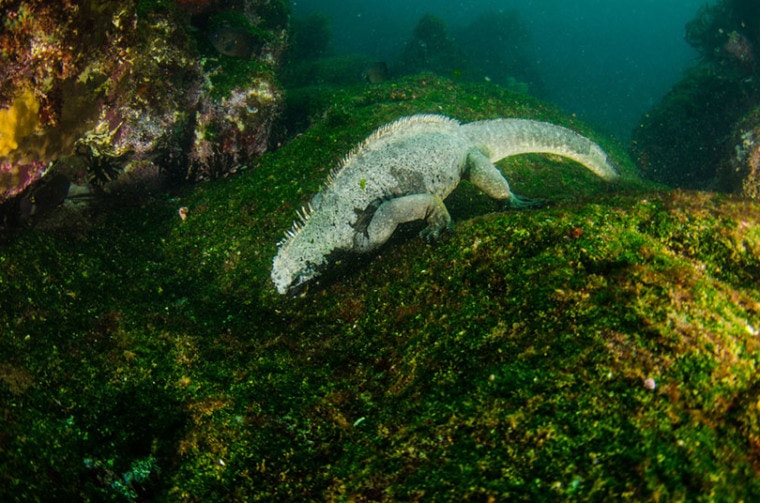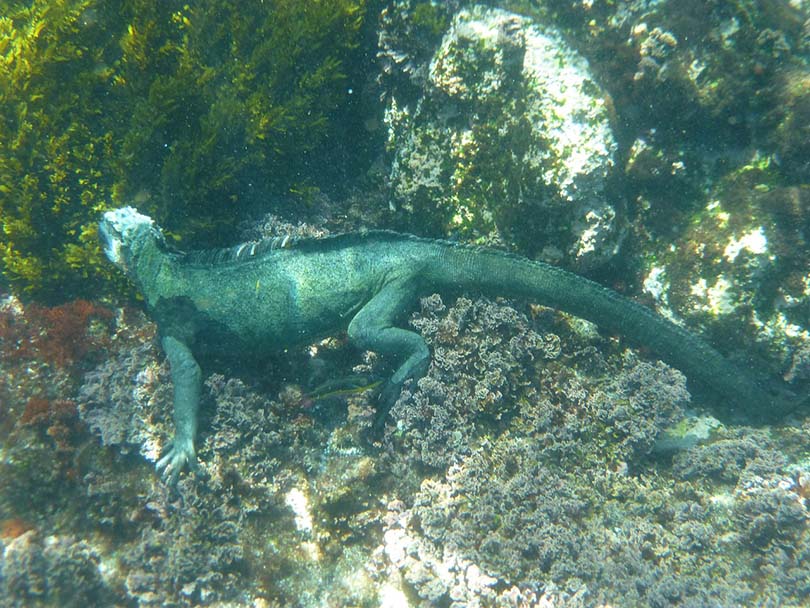
Native to humid, tropical environments, iguanas are natural swimmers and enjoy spending time in water sources. Many iguana species live close to the water, and if they encounter a threat, they may go underwater for as long as 30 or 45 minutes.
In addition, some species, like the marine iguana of the Galapagos Islands, can stay underwater for much longer and will dive to eat algae. Iguanas don’t breathe underwater, however, they just have the ability to hold their breath for long periods.
Iguanas’ Aquatic Abilities
Depending on the species, iguanas may stay underwater for 30 to 60 minutes. In some cases, iguanas can hold their breath for up to four hours. They aren’t able to breathe underwater, however, since they lack gills.
To put this in perspective, the average healthy human can hold their breath underwater for approximately 2 minutes.

How Do Iguanas Swim?
When iguanas swim underwater, they use their tails instead of their arms and legs. This is similar to the way an alligator or a crocodile swims. When they tuck their legs against their bodies, they become more streamlined, and allow their tail to power their forward momentum and steer.
Though iguanas are fast on land, they are not fast swimmers like crocodilian species. The marine iguana only swims about 1.5 feet per second. This is about the same as the human’s average swimming speed.
They’re also unable to maintain this speed for extended periods. It comes in bursts, much like the way a crocodile ambushes prey with a quick burst through the water.
How Deep Can Iguanas Dive?
The marine iguana is one of the most adept species in the water. Because they spend so much time in and around water, they can dive up to 98 feet. Most dives are around 16 feet, however.
When an iguana dives, it’s usually searching for algae or other marine plants. Iguanas are more likely to forage for food in shallow areas instead of diving, however.

Swimming and Bathing for Captive Iguanas
Many iguana species enjoy swimming and diving, so it’s helpful for owners to give them bath time. Keep in mind that captive-born and bred iguanas may not be used to water, so it’s best to start slowly to avoid stress.
For your iguana’s first bath, focus on only a few minutes. As your iguana gets more comfortable with the experience, you can increase the baths by a few minutes each time. Eventually, your iguana may enjoy baths of 20 to 30 minutes.
Bathing your iguana not only gives enrichment but helps with shedding and hydration. The water can moisten and soften shed skin, helping it come off smoothly and easily.
Be sure to keep the water warm enough for your iguana, however. Iguanas are cold-blooded, so water that’s lukewarm or cold can cause a significant body temperature drop in your pet. Make sure the water is warm to the touch, but not hot or steaming. Test the temperature with your elbow, not your fingers, like you would with a baby’s bath.
Summary
Many iguana species enjoy swimming and diving in their natural habitats. These lizards may swim to forage for food, escape predators, or enjoy a relaxing float. Though they cannot breathe underwater like a fish, they can hold their breath for long periods as needed.
Featured Image Credit: YU YUN-PING, Shutterstock








